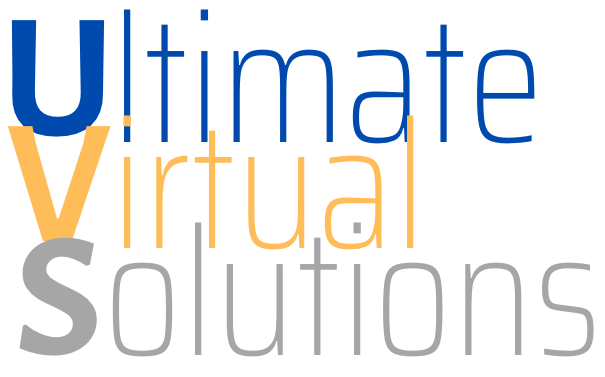To understand these we need to start with Internet Protocol (IP) addresses. IP addresses are special Internet addresses made up of four groups of numbers separated by dots. They look something like this:
67.123.2.55
The numbers in each group can be in the range of 0 (zero) to 255. Both of these are valid IP addresses:
0.0.0.0
255.255.255.255
but this isn't:
674.123.2.55
because the first number is outside of the acceptable range. IP addresses are somewhat like telephone numbers. The IP address designates a location (a piece of equipment, like a server) on the Internet. IP addresses are hard for people to use, though. The numbers are hard to remember and hard to get right. So we replace IP address with domain names. Domain names, being words, are easier for people to remember and work with.
A domain name looks like these examples:
ourhutch.net
wiz.reciprocity.net
www.mainstreetmallonline.com
Domain names are examined from the right to the left. The right-most part is known as the top level domain (TLD, or sometimes first level domain, FLD) and is the .com, .net, .org, .biz, .ca, etc. part. Originally these had specific meanings.
.com = commercial, for business use, ie: citibank.com
.net = network, for Internet companies, associations, etc., ie: swbell.net
.org = organization, for organizations, ie: boyscouts.org
.gov = government, for federal and state level governments, ie: whitehouse.gov
.edu = education, for degree granting colleges and universities, ie: utexas.edu
but that distinct usage has been blended through mis-assignment and improper use. Eventually .com, .net, and .org, were released for general use by just about anyone. Numerous additonal TLDs are available with one for each country:
.us = United States
.ca = Canada
.au = Australia
The next part of the domain, reading from the right, is the second level domain (SLD) and is the part which gives the domain its uniqueness. There can be only one ourhutch.com. It is the SLD that you register in association with the TLD to make your own unique ID. It is this combination that is generally referred to as the "domain name".
Lower level domains, the parts to the right of the SLD, are controlled by the person that registers the domain name. So, I own the registration for reciprocity.net. I can establish, on my own, any of these:
www.reciprocity.net
wiz.reciprocity.net
pages.reciprocity.net
mypage.reciprocity.net
stuff.reciprocity.net
stuff2.reciprocity.net
and any others, including fourth and fifth (and greater) level domains, like this:
these.pages.reciprocity.net
all.these.pages.reciprocity.net
Notice also that not every domain has to start with "www". In fact, www is a particular third, fourth, etc. level domain that is, really, no different than any other. It used to have a specific meaning, standing for "world wide web" and referring to the website attached to the domain but this has long been lost through both mis-use and choice. Third level (and greater) domains are often referred to as "sub-domains".
As we've seen in the examples above, domains never end in /. In fact, domains never have a slash anywhere in them. They are allways just words (groups of letters and, sometimes, numbers) seprated by dots.
When we want to use a domain name to refer to a particular place, thing, or service, on the Internet we convert it into a URL (a Universal Resource Locator -- or, more correctly, a URI, a Universal Resource Indicator, though URL is most commonly used). A URL looks like these:
http://pages.reciprocity.net/
telnet://ambassadorboard.net/
ftp://mainstreetmallonline.com/
http://onlinesellingassociation.org/files/
https//stephenbhenry.com/promo/index.php
URLs contain domains within them. In fact the domain is an important part of the URL telling us "where" we are attempting to go on the Internet. Usually the domain is associated with an Internet server (computer). But there is more to the URL. The first part, that looks like these:
http://
ftp://
telnet://
is the protocol identifier. This part tells us what sort of function we are going to do with the URL. "http" stands for Hyper-Text Transfer Protocal and refers to the method by which most documents on the World Wide Web are transferred. "ftp" stands for File Transfer Protocol and refers to the method by which many files on the Internet (and other networks) are transferred. "telnet" stands for Telecommunication Network and is one of the earliest standards (or "protocols") for information exchange on the Internet. It is a powrful, though simple, service. I use telnet almost daily for direct interaction with my remote servers on the Internet. It allows me to access my remote server(s) from my own keyboard and monitor in my home-based office just as if I was sitting at the keyboard and monitor attached to the server itself.
Right after the protocol identifier is the domain name with all its parts. Sometimes that is all there is in a URL. These are written both with and without a trailing slash, like this:
http://reciprocity.net
http://reciprocity.net/
ftp:wiz.reciprocity.net
ftp:wiz.reciprocity.net/
Both are acceptable but the ones with the slash are "correct" usage. The slash tells us (and our computer) that this is a full domain. It actually saves time in the "look up" process that occurs when computers are communicating with each other.
URLs often refer to sub-directories (or folders, not to be confused with sub-domains) and particular resources (documents, files, web pages, etc.) and look like this:
http://reciprocity.net/folder
http://reciprocity.net/folder/
http://wiz.reciprocity.net/mystuff/file.html
http://pages.reciprocity.net/gallery/pix1/
When they refer to a sub-directory (or folder) then they can, or cannot have a trailing slash. Just as with the domain by itself it is more "correct", and produces faster results, to include the slash. When the last part of the URL is a resource then it is never correct to use a trailing slash. If you are confused about whether to use one or not you can just leave it off and everything will be fine, but if you know when to use one you can improve the performance (speed) of file/page lookups.
Discover more from Ultimate Virtual Solutions
Subscribe to get the latest posts sent to your email.

